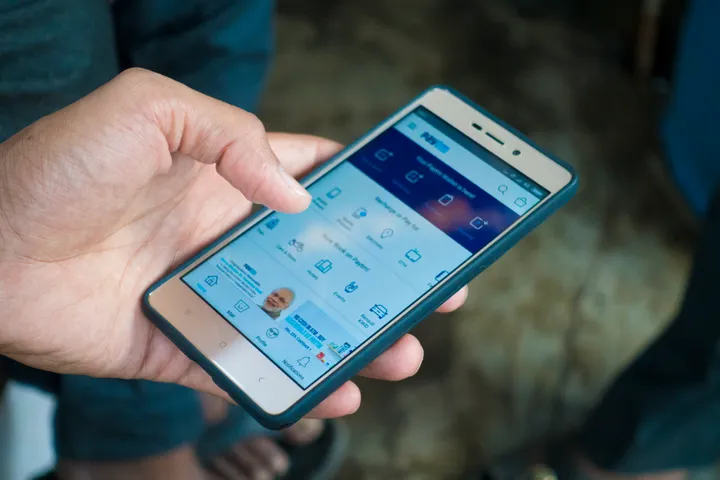[HuffPost] Why We're Excited About Technology Stacks for Financial Inclusion

There are a lot of buzzwords out there when it comes to technology, so we try not to get caught up with each new fad. But everywhere we look, we see a concept that promises to be a powerful driver of not only innovation, but also economic progress: technology stacks.
A technology stack is an innovative idea layering several underlying platforms which complement each other to create something new. Ride-hailing services Lyft and Uber are an example: The apps run on smartphones, which run on mobile infrastructure and mapping applications, which in turn use public address records and GPS system.
As a new application is layered on top of it, each technology becomes a platform. Another case in point: Messaging apps started as single-purpose programs for SMS and chat. Now, they can be used for customer service, bill pay, e-commerce, and more.
By kick starting this virtuous cycle of innovation and adoption, technology platforms have proven to be especially useful in reaching an exponentially growing number of people at rapidly falling costs. Moreover, platforms are self-reinforcing, encouraging participation from a larger number of players, and attracting investment capital.
Increasingly, policymakers and key industry players are recognizing the potential of building technology stacks by layering platforms to tackle the issue of financial exclusion. This could be the most effective way to offer financial services to the 2 billion working-age adults in developing countries who continue to live and work in the informal economy.
Smart policies around the globe are starting to leverage the power of layering technology platforms to reach more people with essential services at lower costs. When it comes to financial inclusion, a stack of connected platforms can catalyze the delivery of financial services to underserved consumers at the required scale and at near-zero marginal cost.
The success of mobile money is a powerful illustration. In Sub-Saharan Africa, electronic money sent and received via mobile phones has proven powerful for domestic remittances—and more recently for international transfers. More importantly, this near-ubiquitous, retail digital payments platform has enabled many new financial services innovations, such as instant, low value, unsecure credit, and low-denomination, short-term savings, as well as micro-insurance, and micro-leasing of solar residential power. This broader range of services simply would not have been viable in a cash-based economy or within the traditional brick-and-mortar branch infrastructure.
From a public policy and infrastructure investment perspective, some of the more recent mobile money deployments show promising evolution. In Myanmar, the regulator built in the requirements to offer mobile money when it auctioned off the first three mobile telephony licenses in 2013. The country’s mobile money regulator took some of the lessons learned in other countries into account, such as non-exclusivity clauses for last-mile cash-in/cash-out agent networks. This is crucial to encourage competition, as remote locations may not sustain multiple local agents.
In Peru, government, financial institutions, mobile network operators, and other industry players came together in 2015 to set up an open, interoperable e-money platform that from the outset relies on shared infrastructure.
The most exciting technology platform for financial inclusion is now being created in India, the so-called India Stack. Based on the country’s large-scale biometric identity program known as Aadhaar, which allows for fast and cheap identity authentication, this government-driven technology stack is providing a combination of public utilities and software standards that would dramatically increase both bank and non-banks’ ability to offer consumers a broader range of financial services at lower costs.
India’s financial regulators for banking and securities are allowing Aadhaar to be used for digital Know Your Customer (KYC) verification. Also layered on the Aadhaar platform, efforts to develop e-signature protocols and digital document lockers are underway. Finally, late last year, the National Payments Cooperation of India introduced a Unified Programming Interface that enables real-time, ultra-low-cost, any-to-any account payment transactions.
A recent government report by the Watal Committee—a panel of digital payments experts across the India government convened by the Ministry of Finance—recognized that the India Stack will enable the necessary innovation and growth for promoting digital payments. As in Sub-Saharan Africa, India hopes to layer new digital financial services on this fast-growing infrastructure. Ultimately, all the ingredients are coming together in India to create 21st-century, end-to-end paperless financial services delivery over a stack of interoperable, open API platforms.
The ability to leverage such a technology stack creates new ways to unbundle traditional financial services and re-bundle them for a superior customer value proposition, helping people from all economic brackets to better manage their financial lives.
Tilman Ehrbeck (@TilmanEhrbeck on Twitter) is a partner at the philanthropic investment firm Omidyar Network.